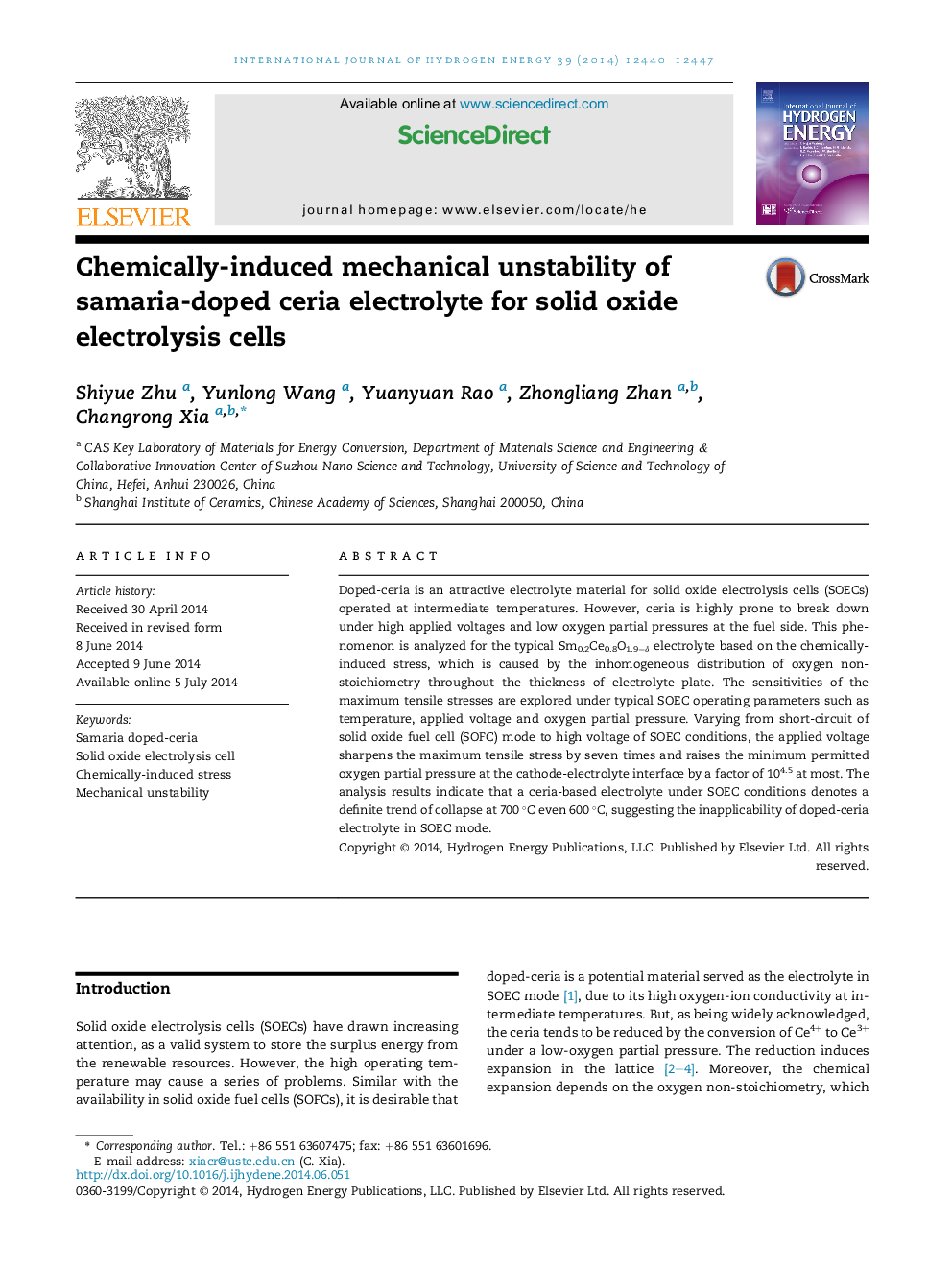| Article ID | Journal | Published Year | Pages | File Type |
|---|---|---|---|---|
| 7718148 | International Journal of Hydrogen Energy | 2014 | 8 Pages |
Abstract
Doped-ceria is an attractive electrolyte material for solid oxide electrolysis cells (SOECs) operated at intermediate temperatures. However, ceria is highly prone to break down under high applied voltages and low oxygen partial pressures at the fuel side. This phenomenon is analyzed for the typical Sm0.2Ce0.8O1.9âδ electrolyte based on the chemically-induced stress, which is caused by the inhomogeneous distribution of oxygen non-stoichiometry throughout the thickness of electrolyte plate. The sensitivities of the maximum tensile stresses are explored under typical SOEC operating parameters such as temperature, applied voltage and oxygen partial pressure. Varying from short-circuit of solid oxide fuel cell (SOFC) mode to high voltage of SOEC conditions, the applied voltage sharpens the maximum tensile stress by seven times and raises the minimum permitted oxygen partial pressure at the cathode-electrolyte interface by a factor of 104.5 at most. The analysis results indicate that a ceria-based electrolyte under SOEC conditions denotes a definite trend of collapse at 700 °C even 600 °C, suggesting the inapplicability of doped-ceria electrolyte in SOEC mode.
Keywords
Related Topics
Physical Sciences and Engineering
Chemistry
Electrochemistry
Authors
Shiyue Zhu, Yunlong Wang, Yuanyuan Rao, Zhongliang Zhan, Changrong Xia,
